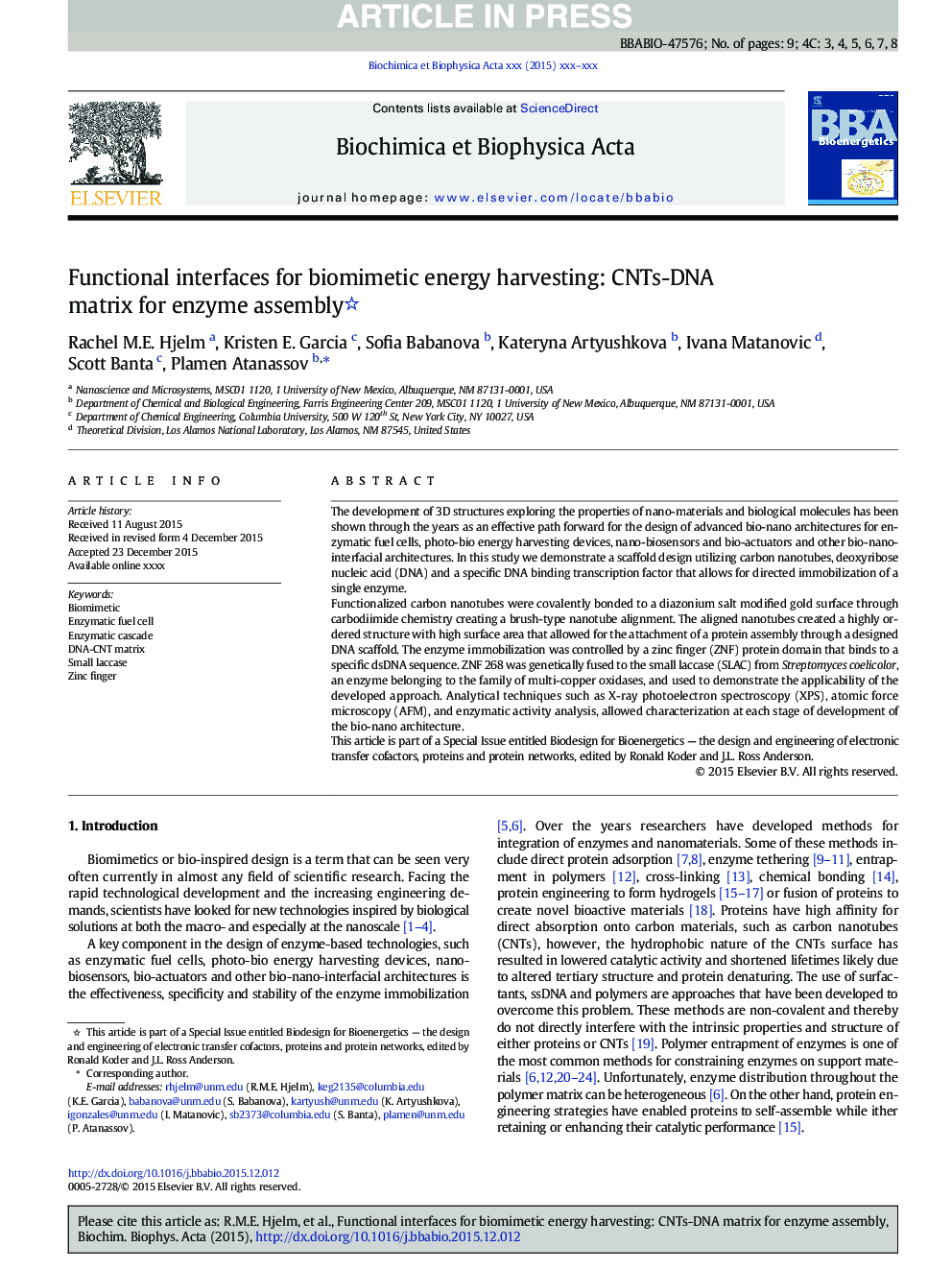| Article ID | Journal | Published Year | Pages | File Type |
|---|---|---|---|---|
| 1942096 | Biochimica et Biophysica Acta (BBA) - Bioenergetics | 2016 | 9 Pages |
Abstract
Functionalized carbon nanotubes were covalently bonded to a diazonium salt modified gold surface through carbodiimide chemistry creating a brush-type nanotube alignment. The aligned nanotubes created a highly ordered structure with high surface area that allowed for the attachment of a protein assembly through a designed DNA scaffold. The enzyme immobilization was controlled by a zinc finger (ZNF) protein domain that binds to a specific dsDNA sequence. ZNF 268 was genetically fused to the small laccase (SLAC) from Streptomyces coelicolor, an enzyme belonging to the family of multi-copper oxidases, and used to demonstrate the applicability of the developed approach. Analytical techniques such as X-ray photoelectron spectroscopy (XPS), atomic force microscopy (AFM), and enzymatic activity analysis, allowed characterization at each stage of development of the bio-nano architecture. This article is part of a Special Issue entitled Biodesign for Bioenergetics - the design and engineering of electronic transfer cofactors, proteins and protein networks, edited by Ronald L. Koder and J.L. Ross Anderson.
Related Topics
Life Sciences
Agricultural and Biological Sciences
Plant Science
Authors
Rachel M.E. Hjelm, Kristen E. Garcia, Sofia Babanova, Kateryna Artyushkova, Ivana Matanovic, Scott Banta, Plamen Atanassov,
